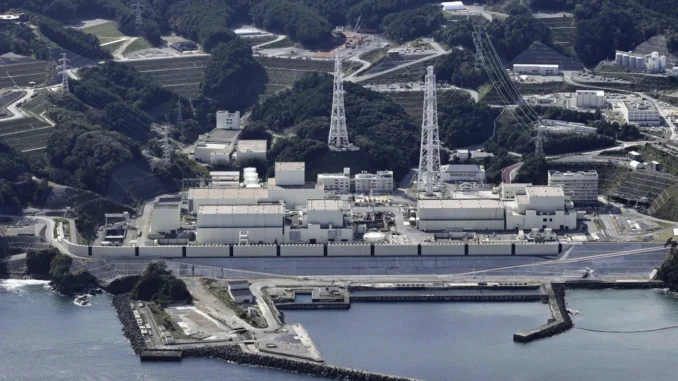
Japan’s nuclear energy ambitions faced a significant setback as the country’s Nuclear Regulation Authority (NRA) officially disqualified the Tsuruga No. 2 reactor from restarting. This decision, the first of its kind under the stricter safety standards implemented post-Fukushima, underscores the challenges Japan faces in balancing energy needs with public safety.
Stricter Safety Standards Post-Fukushima
The NRA’s rejection of Tsuruga No. 2 is rooted in safety concerns over potential active fault lines beneath the reactor, which could trigger earthquakes. These rigorous safety standards were introduced in 2013, following the devastating Fukushima Daiichi nuclear disaster in 2011, caused by a massive earthquake and tsunami.
“We reached our conclusion based on a very strict examination,” said NRA chairperson Shinsuke Yamanaka, emphasizing the comprehensive review process. The decision came after more than eight years of safety reviews, which were marred by data discrepancies and operator errors. Yamanaka described the case as “abnormal” and urged Japan Atomic Power Co., the reactor’s operator, to take the ruling seriously.
The Implications for Japan Atomic Power
The disqualification of Tsuruga No. 2 deals a severe blow to Japan Atomic Power Co., which had been banking on the reactor’s restart to sustain its operations. The company has already committed to decommissioning its Tsuruga No. 1 reactor and had hoped to reestablish No. 2 as a viable energy source. However, the NRA’s findings that active fault lines may extend directly beneath the facility make a restart virtually impossible without extensive reevaluation and safety assurances.
In a statement, Japan Atomic Power expressed disappointment, calling the decision “extremely regrettable.” Despite this, the company vowed to continue its efforts to restart the reactor, which has been offline since May 2011.
Broader Implications for Japan’s Energy Policy
The rejection comes at a critical time for Japan’s energy strategy. In 2022, the government adopted a policy aimed at maximizing nuclear energy usage to secure a stable energy supply and meet its carbon neutrality goals by 2050. However, safety remains the cornerstone of this policy.
Chief Cabinet Secretary Yoshimasa Hayashi reiterated the government’s stance: “Safety is the prerequisite for nuclear plant operation. The government respects the scientific and highly technical decision by the watchdog.” Hayashi emphasized that while the government’s commitment to nuclear energy remains unchanged, ensuring public safety is paramount.
Earthquake Concerns and Public Skepticism
Public apprehension about nuclear energy has intensified following recent seismic events. A magnitude 7.5 earthquake on Japan’s Noto Peninsula on January 1, 2024, resulted in over 400 fatalities, damaged more than 100,000 structures, and caused minor damage to two nearby nuclear facilities. The quake exposed gaps in regional evacuation plans, raising questions about the preparedness of nuclear facilities in earthquake-prone areas.
Japan’s policy prohibits the construction of critical nuclear infrastructure, including reactors, directly above active fault lines. The NRA’s findings on Tsuruga No. 2 align with this policy, reflecting the heightened scrutiny of geological risks in reactor operations.
Challenges for Reactor Restarts
Japan currently operates a fleet of over 50 commercial nuclear reactors. Of these, 27 have applied for restart permits under the post-Fukushima safety standards, with 17 approvals granted to date. The Tsuruga No. 2 case highlights the complexities involved in proving the geological safety of nuclear sites, especially in a country as seismically active as Japan.
While the NRA is not immediately ordering the decommissioning of Tsuruga No. 2, the reactor’s future remains uncertain. Yamanaka stated that if Japan Atomic Power chooses to reapply for a restart, it must not only address the fault line concerns but also implement comprehensive safety measures across the plant.
Conclusion
The NRA’s decision to disqualify the Tsuruga No. 2 reactor is a landmark moment in Japan’s nuclear regulatory history. It underscores the country’s commitment to stringent safety standards while navigating the challenges of ensuring a stable and sustainable energy supply.
As Japan strives to meet its carbon neutrality goals, the Tsuruga No. 2 ruling serves as a reminder of the delicate balance between advancing nuclear energy and safeguarding public safety in an earthquake-prone nation. Whether Japan Atomic Power can overcome these hurdles remains to be seen, but the decision sets a precedent for the rigorous scrutiny all reactors must endure in the post-Fukushima era.
Leave a Reply